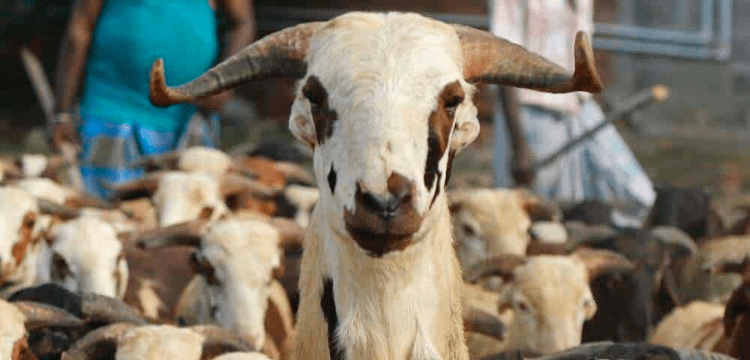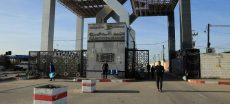[vc_row][vc_column][vc_column_text dp_text_size=”size-4″]It’s that time of year again, when national feelings of sacrifice collide with the Eid festival.
According to Pakistan Tanners Association figures for 2022, Eid ul Adha generated an estimated Rs. 329 billion in economic activity in the country through sacrifice alone, which exceeds Rs. 500 billion when linked economic activities are added.
According to Yawar Chawla, Spokesperson of Cattle Mandi, Asia’s largest cattle market formed every year in Karachi to provide for the city’s 200 million residents, an estimated 8.1 million animals were killed last year, which is ‘anticipated to cross 10 million despite the current inflationary pressure’.
“Despite the skyrocketing inflation, Eid ul Adha is a one-of-a-kind festival where you can find animals in your desired range,” Chawla remarked. He emphasised that, while livestock costs are 20-25 percent higher than in 2022, they remain lower than year-on-year inflation.
Another aspect that could contribute to increasing sacrificial activity is a 68 percent increase in Hajj prices, with quota staying underutilised for the first time in history, implying that more money is pouring towards animal sacrifice.
Also Read: PIA begins direct flights between Karachi and Skardu.
Pakistan’s livestock sector is valued Rs 5.4 trillion and accounts for 14 percent of GDP and more than 61 percent of agriculture GDP. The government claims 3.78 percent sector growth in the current fiscal year, up from 2.25 percent in the previous fiscal year. A problematic estimate when you consider that roughly 0.8 million animals died in the disastrous floods, and lumpy skin disease (LSD) also hampered the sector’s expansion, but that’s a topic for another time.

Transportation and feed costs are the key factors driving up animal pricing. Diesel costs have risen roughly 45 percent year on year, and animal fodder availability is typically difficult at this time of year, even in normal circumstances. Furthermore, the size, breed, health, and, most importantly, the physical appearance of animals determine their pricing.
Annual cattle markets bring together all livestock stakeholders; not only do citizens come to buy animals for sacrifice, but domestic and international clientele also come to buy animals for fattening. In an open competition, it connects cattle owners from remote locations with purchasers from around the country, and that money stream goes a long way towards rural development.
A wide range of industries coexist with this particular economic activity. From the feed business to immunisations and pharmaceuticals, and from banking institutions to transportation, everyone provides value and profits.
Karachi is the largest cattle market in Asia.
Karachi is a unique city with a 2.6 million demand for sacrificial animals, but unlike Punjab and interior Sindh, the culture of rearing animals for Eid ul Adha is non-existent within a 100 km radius of the metropolitan city, making it difficult to meet the cattle demand during Eid ul Adha.
“We have been establishing this market for the last 22 years with the collaboration of cantonments, local bodies, Rangers, and other law enforcement agencies,” Chawla explained. He revealed that the Karachi Cattle Mandi has been totally digitised for the first time, and RFID cards are issued to process owners at entry through a single window following thorough medical checks.
VIP blocks for large cattle traders cost Rs. 150,000 every 30120 ft block, but small farmers receive space and water for free in exchange for a one-time entry charge of Rs. 4000/- for large animals and Rs. 2000/- for small animals.
Chawla noted that the Karachi Cattle Mandi was relocated to the Northern Bypass because the prior location had increased crime, traffic, and drainage concerns, but the current location had better roads and drainage facilities, a food court, parking, and security preparations.
Challenges Persist:
Livestock is deeply embedded in the rural family economy. It is where individuals invest their riches, and it also acts as a medium of exchange. However, as a business, its value is tainted by inefficiencies and shortages, and it does not appear to be a ‘value chain’ at all. To begin with, we have no idea what we have.
According to government figures, Pakistan had 82.5 million goats, 53.4 million cattle, 43.7 million buffaloes, 31.9 million sheep, and 1.1 million camels in 2006, but these are estimations based on the livestock census. Furthermore, no one is recognising, let alone preserving, creatures with greater genetic makeup.

Domestic animal ranches and processing plants fall short of international norms. Only four companies were permitted when China recently opened up meat imports from Pakistan. People are unwilling to modernise their enterprises because they lack the necessary tools, funds, and motivation.[/vc_column_text][/vc_column][/vc_row]











